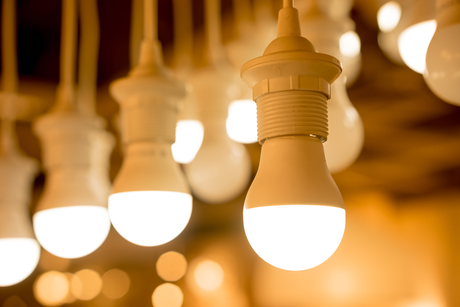A new phosphor for more efficient lighting

Researchers from KU Leuven have discovered a new phosphor that could make next-generation fluorescent and LED lighting even cheaper and more efficient. Writing in the journal Nature Materials, the team described their use of highly luminescent clusters of silver atoms and the porous framework of minerals known as zeolites.
Silver clusters consist of just a few silver atoms and have remarkable optical properties. However, current applications are limited as the clusters tend to aggregate into larger particles, thus losing the interesting optical properties.
Professor Johan Hofkens and his team from KU Leuven’s Molecular Imaging and Photonics unit have now found a way to keep the silver clusters apart by inserting them into the porous framework of zeolites. The result: stable silver clusters that maintain their unique optical properties.
Zeolites are minerals that are either found in nature or produced synthetically on an industrial scale. The minerals have a very rigid and well-defined framework of small molecular-sized channels, pores and cages. They’re commonly used in domestic and industrial applications such as washing detergent and water treatment.
“Zeolites contain sodium or potassium ions,” explained Professor Maarten Roeffaers from the Centre for Surface Chemistry and Catalysis. “We used ion exchange to replace these ions with silver ions. To obtain the clusters we wanted, we heated up the zeolites with the silver ions so that the silver ions self-assembled into clusters.”
In collaboration with Professor Peter Lievens’ Laboratory of Solid-State Physics and Magnetism, the researchers examined the properties of these heat-treated ‘silver zeolites’ and found that the structural, electronic and optical properties of the zeolites were strongly influenced by the silver clusters. That’s how they discovered that the shape of the silver clusters is essential to obtain the right fluorescence properties.
“Clusters of silver atoms can assemble into different shapes, including a line or a pyramid,” said Professor Hofkens. “This pyramid shape is what we need to obtain the best fluorescence properties. Heating up the silver ions in the zeolite framework makes them adopt this shape. Because they are ‘trapped’, as it were, in the cages of the zeolites, they can only form a pyramid with up to four silver atoms. That is exactly the shape and size in which the silver cluster emits the largest amount of fluorescent light, with an efficiency close to 100%.”
The new phosphors not only emit a large amount of light, they are also cheap to produce. The findings therefore have great potential for the development of next-generation fluorescent and LED lighting and for biological imaging.
Berrima Cement Works upgrades with sustainable tech
Boral has unveiled new carbon-reducing technology at the site, which supplies 40% of cement in...
Australian orgs partner to speed circular economy
GS1 Australia has joined forces with the Product Stewardship Centre of Excellence to drive the...
Victorian utility recognised at Asian Water Awards
South East Water won two awards for its Hydrotrak Geofencing technology, which has helped it to...









